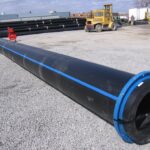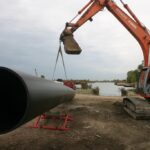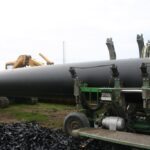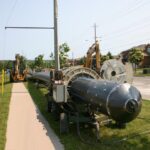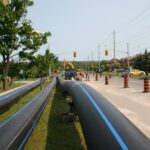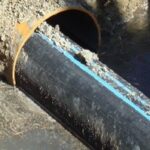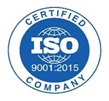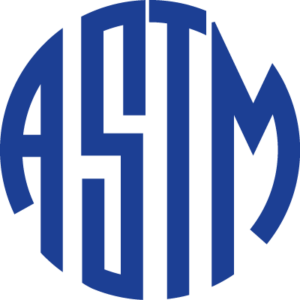Tough, Light Weight, Resilient HDPE Solid-Wall Pipe for Municipal & Industrial markets.
Extreme weather, deteriorating infrastructure, and growing populations are all placing stresses on new and older piping systems, resulting in failures, increased operating costs and potential health risks. Engineering designs which use storm events as part of their risk-based modelling are being challenged due to the frequency and intensity with which storms now occur. To solve this, engineers now place greater importance on "Performance" within design criteria. With 1,000's of installations and a 100 year design life, choose Sclairpipe when Performance matters.
Sclairpipe Performance
When performance is demanded, it is no surprise Sclairpipe is selected as the pipe of choice by municipalities. Delivering performance of non-corroding, non-tuberculating, chemically inert, H2S resistant, strength and leak free joints, it is no wonder Sclairpipe has one of the lowest life cycle cost in industry today. Made from advanced, high pressure, high density resin, Sclairpipe maintains integrity over its 100 year design life, eliminating costly inspections and condition assessments, making it ideal for use in any Asset Management Plan or ISO 55001 requirements.
Sclairpipe Properties
Sclairpipe is available in diameters from 3” to 63”, manufactured in accordance to ASTM, AWWA, CSA, FM and API standards, carrying certifications from NSF and BNQ. Sclairpipe offers excellent resistance to hydrogen sulphide (H2S), chemical attack, abrasion and pH swings. Sclairpipe performance is assured as it will not corrode, tuberculate or support biological growth delivering one of the lowest life cycle costs in industry today. With superior properties, challenging applications are quickly solved; dynamic soils, aggressive environments, seismic regions, transient pressure, river crossings.
(1) Pipe dimensions are in accordance with applicable pipe specification
(2) Some DR sizes are only available upon request. Check with representative
(3) Other pipe lengths available upon request
(4) Black pipe with external color stripping. Striping upon request
(5) Subject to application design review
Sclairpipe Advantages
-
Lighter
-
Stronger
-
Chemical Resistant
-
Leak Proof
-
Easy Transport
-
Easy Installation
-
Eco Friendly
Sclairpipe® Applications
Sclairpipe can be easily installed as a stand alone system or be used to extend and expand existing systems. Sclairpipe is quickly joined together using simple heat fusion practices and can be easily connected into existing systems of different sizes and/or different material types through the use of mechanical connections, flanges, compression couplings and other available joining devices.
HDPE Built to Last
Advancements in polyethylene (PE) chemistry has progressed significantly since its discovery in 1933 to today. By leveraging these technological advancements, Sclairpipe characteristics and properties are unmatched in performance and durability over that of conventional materials and offers a 100 year design life.
ADVANTAGES
- Weighs approx. 1/10th of a similarly sized concrete pipe
- Flexible and resilient, resists pressure transients/hammering common cause of pipe breaks
- Strong, robust HDPE material allows for year round installation within hot or cold climates
- Zero leakage system with thermally fused joints
- Light weight allows for easy install and minimum heavy equipment requirements reducing costs
- Resistant to salts, hydrogen sulfide, pH and sewage effluent allows for a 100 year design life
- Hydrophobic, smooth interior surface ensures minimum head loss at maximum flow
- Can be cold bent and installed on a radius, eliminating fittings and associated costs
- Can be installed without expensive foundations or minor degree trenches
- Ideally suited for installation within seismic regions and dynamic soils
APPLICATIONS
Potable water distribution
Pressure water systems
Sewage systems, including gravity sewers and forcemains
Water mains
Fire mains
Directional drilling
Trenchless technologies
Conduit
Slurry pipe
Mining
Marine pipelines and crossings
Deep water intakes and outfalls
Irrigation lines
Gas gathering
Landfills

